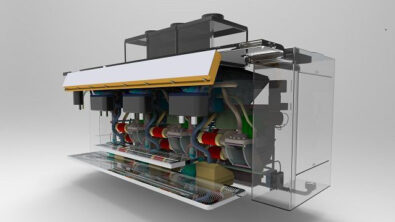Enhancing Operational Resiliency with Industrial IoT and Low-Code: Insights from Siemens and Forrester

In today’s dynamic business environment, companies face immense pressure from volatile markets, evolving consumer demands, and changing regulations. The ability to adapt and thrive in this unprecedented landscape is contingent upon operational resiliency. In this Siemens and Forrester blog, we explore the pivotal role of industrial IoT and low-code technologies in enhancing operational resiliency. Discover how these transformative solutions empower businesses to navigate challenges with agility and effectiveness. To get a glimpse into our insightful webinar on this topic, check out the captivating video below!
Understanding operational resiliency
Operational resiliency refers to an organization’s ability to adapt to changing business requirements while ensuring business continuity. According to the research conducted by Siemens and Forrester, operational resiliency is an ongoing process that involves continuous research, discovery, learning, and application. It is crucial to allocate resources effectively, considering the finite nature of time and people.
Research findings on operational resiliency
Siemens and Forrester’s research findings shed light on the significance of operational resiliency across industries. The study revealed that 89% of organizations surveyed reported being siloed, lacking connectivity and visibility. This lack of connectivity increases the margin for error, resulting in higher costs. The research emphasizes the need for integration of tools and out-of-the-box solutions to overcome inflexibility and enable adaptability.
Industrial IoT: empowering operational resiliency
Industrial IoT plays a pivotal role in enhancing operational resiliency. Real-time data monitoring enables organizations to gain valuable insights into their operations, facilitating proactive decision-making. Predictive maintenance, made possible through IoT technologies, helps prevent equipment failures and optimize maintenance schedules, reducing downtime and costs. According to the research findings, IoT technologies can provide a 30% reduction in maintenance costs and a 70% decrease in downtime.
Low-Code: streamlining application development
Low-code platforms offer a streamlined approach to application development, reducing reliance on traditional coding methods. By leveraging visual interfaces and pre-built components, organizations can accelerate the development process. The webinar highlights the benefits of low-code, including a 50% reduction in development time and a 70% decrease in IT support costs. Additionally, low-code platforms enable organizations to adapt to changes more easily, as they offer flexibility and agility in application development.
Industrial IoT and low-code synergy
The synergy between industrial IoT and low-code is instrumental in driving operational resiliency. By combining IoT technologies with low-code platforms, organizations can create scalable and adaptable solutions to enable organizations to adapt to changing business requirements quickly. A consistent and scalable approach is necessary to empower organizations to enhance their operational resiliency.
Powering operational resiliency: unleashing the potential of industrial IoT and low-code technologies
Operational resiliency is crucial for organizations to thrive in today’s dynamic business environment. The integration of industrial IoT and low-code presents a powerful opportunity for businesses to enhance their operational resiliency. By leveraging IoT technologies and low-code platforms, organizations can achieve greater connectivity, visibility, and adaptability, ultimately leading to improved performance and competitiveness. To learn more about how industrial IoT and low-code can empower your organization, watch the full recording of the Siemens and Forrester webinar here.


